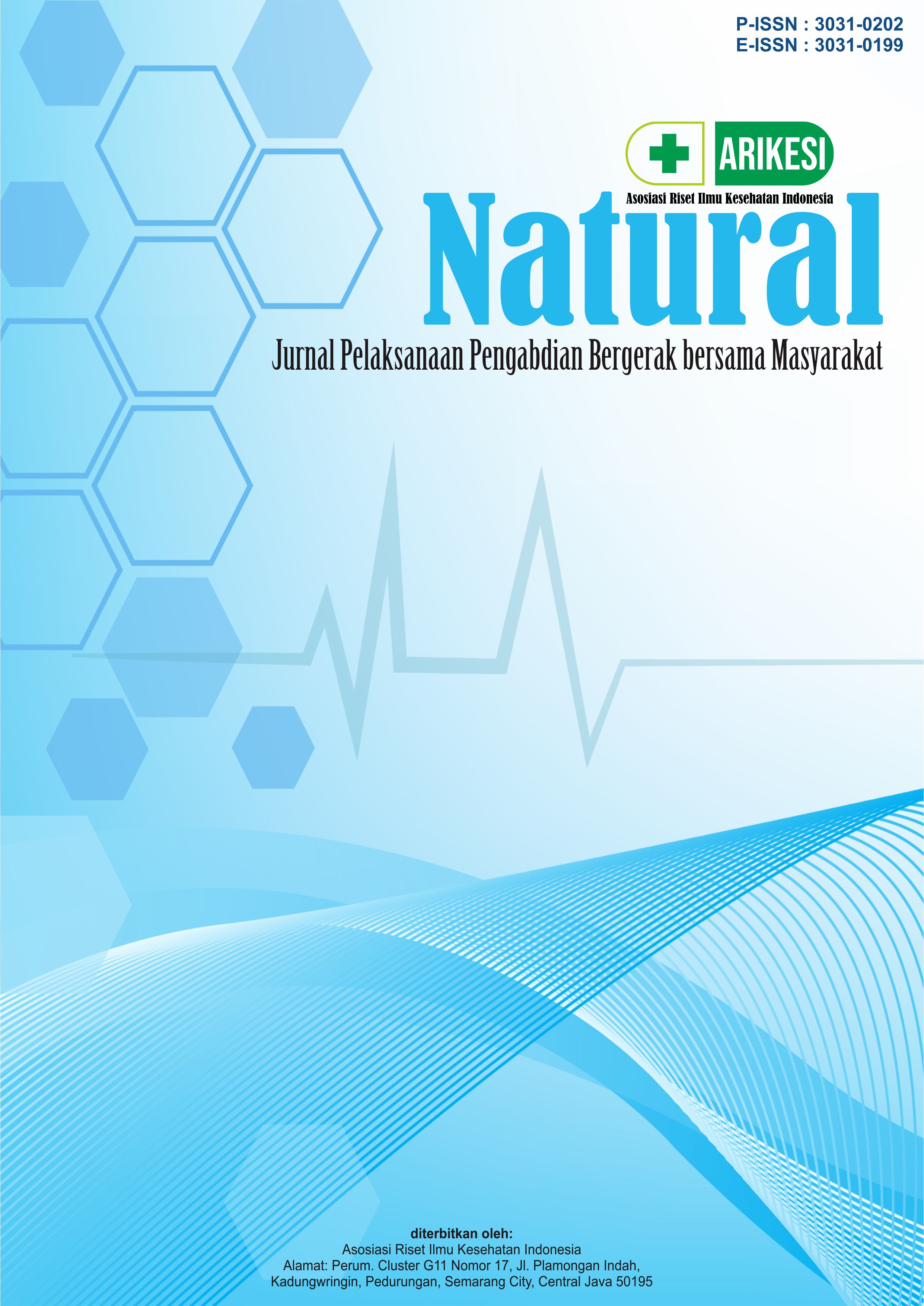Pendampingan Keluarga Sebagai Caregiver Dalam Merawat Pasien Stroke Di Rumah Sakit Mardi Rahayu Kudus
DOI:
https://doi.org/10.61132/natural.v1i4.206Keywords:
Family, caregiver, strokeAbstract
Stroke is a major health problem for modern society today. According to WHO (World Health Organization) in 2016, 51% of stroke deaths worldwide were caused by high blood pressure. Based on data on the top 10 most common diseases in Indonesia in 2018, the prevalence of stroke cases in Indonesia based on health worker diagnosis was 10.9 per mille. Various problems that stroke patients may experience include paralysis, weakness, balance disorders, speech disorders, etc. so that these patients need help in meeting their daily needs. The family as a caregiver has a major role in providing primary support to individuals with stroke and is the first person to respond to changes in the patient's status during the course of the disease. The aim of this community service program is to maximize family assistance as caregivers in caring for stroke patients. The obstacles experienced by caregivers are financial and time problems in accompanying stroke families at Mardi Rahayu Kudus Hospital. Based on the results of interviews that have been conducted, almost all the feelings of families as caregivers in caring for stroke patients are sad, almost all participants answered that the service at Mardi Rahayu Hospital is good and fast, almost all participants' hopes for their husbands are that they can recover quickly, almost all The obstacles experienced by caregivers are financial and time problems. Therefore, assistance and providing motivation to families as caregivers for stroke patients is very important.
Downloads
References
Ahmadi,R.(2016).Metodologi penelitian kualitatif.Yogyakarta:Ar-Ruzz Media.
Arya, W.W. 2011. Strategi Mengatasi & Bangkit Dari Stroke, Yogyakarta : Pustaka Pelajar.
Awad, A. G., & Voruganti, L. N. (2008). The Burden of Schizophrenia on Caregivers. Journal of Pharmacoeconomics, 26(2), 149-162.
Brunner and Suddarth. (2002). Buku Ajar Keperawatan Medikal Bedah. edisi 8 volume 2. Jakarta : EGC.
Dinkes, Jateng.Profil Kesehatan Provinsi Jawa Tengah Tahun 2012. 2013, Semarang: Dinkes Jateng
Drummond, 2008. Young female perceived experience of caring for husband with sroke. http://ojni.org.drummond.htm.
Feigin,Valery.(2006).Stroke.Jakarta:PBhuana Ilmu Popuper Kelompok Gramedia.
Given, B. A., Given, C. W,. & Sherwood, R. P. (2011). Family & caregiver needs over the course of the cancer trajectory. The Journal of Supportive Oncology, 10(2), 57–64.
Junaidi, Iskandar. (2011). Stroke Waspadai Ancamannya. Yogyakarta: C.V. Andi Offset
Julianti, (2013) tentang pengalaman caregiver dalam merawat pasien pasca stroke di Rumah pada Wilayah Kerja Puskesmas Benda Baru Kota Tangerang Selatan
Murwani, A. 2007. Asuhan Keperawatan Keluarga Konsep dan Aplikasi Kasus. Jogjakarta : Mitra Cendikia Press.
Muttaqin, A. 2008. Asuhan Keperawatan Klien dengan Gangguan Sistem Persarafan. Jakarta: Salemba Medika
Notoatmodjo, Soekidjo. 2012. Metodologi Penelitian Kesehatan. Jakarta: Rineka Cipta.
Nursalam . 2013. Metodologi Penelitian Ilmu Keperawatan : Pendekatan Praktis. Edisi 3. Jakarta: Salemba Medika
Ogungbo, 2008. How can we improve the management of stroke in Nigeria.Africa. http://www.ajns. Peans.org.article.php.id.article
Ostwalld, 2008. Education guidelines for stroke survivors after dischange home :literatur/ http://medscape.com/viewarticle





